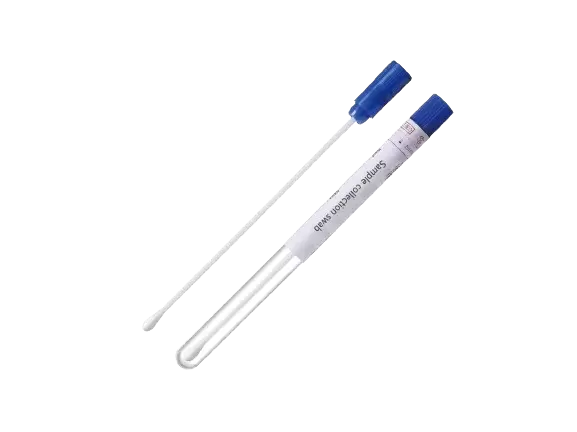- This topic is empty.
-
AuthorPosts
-
The reliability of any diagnostic test depends on how well the specimen is collected, stored, and transported. While modern laboratories employ advanced testing technologies, the accuracy of results still begins with proper sample handling. The swab tube plays a central role in this process. It provides a sterile, sealed environment for swabs, ensuring that biological or environmental samples remain intact until analysis. However, using swab tubes correctly is just as important as the product itself. Inadequate handling can lead to contamination, compromised results, or even biosafety risks. This article Kangjian provides a comprehensive guide on the correct usage of swab tubes, including preparation, collection, sealing, transportation, and storage protocols.

Preparation Before Using a Swab Tube
Before using a swab tube, careful preparation is crucial to ensure both accuracy and biosafety. Medical professionals, laboratory technicians, and quality assurance officers should start by confirming that every swab tube is individually sealed in sterile packaging. Any packaging that is torn, opened, or tampered with must be discarded immediately to maintain sterility.
It is also essential to verify labeling details such as the lot number, expiration date, and the specific type of swab tube—whether it is a dry swab, one containing transport medium, or a specialized forensic or environmental type. Personnel must prepare appropriate PPE, including gloves, masks, and protective clothing, to prevent contamination. Finally, label each swab tube with the patient’s identification, specimen type, and collection date before use. This simple step greatly reduces the risk of sample mix-ups and ensures traceability throughout the testing process.
By following these preparatory measures, users establish a solid foundation for contamination-free and reliable specimen collection using the swab tube.
Step-by-Step Collection Process with Swab Tube
1. Opening the Swab Tube
Open the swab tube carefully by peeling back the sterile packaging, ensuring that the swab tip does not come into contact with any surfaces. Avoid touching the absorbent end of the swab or laying it down, as even minimal exposure can compromise sample integrity.
2. Collecting the Specimen
For clinical applications, gently insert the swab into the collection site—such as the throat, nasal cavity, or wound—and rotate it several times to ensure adequate absorption. In environmental or industrial testing, swab the target surface uniformly, maintaining steady pressure across the area to capture representative samples. For forensic or DNA analysis, use the swab tube to collect epithelial cells from surfaces or the buccal cavity carefully, ensuring the swab tip remains intact.
3. Inserting the Swab into the Tube
Immediately after collection, insert the swab back into the swab tube. The sterile inner surface of the tube protects the sample from contamination. Take care not to touch the outer part of the tube or cap during this step.
4. Sealing the Tube
Once the swab is inserted, close the swab tube securely. For screw-cap tubes, ensure the cap is tightened fully; for snap-cap types, press firmly until an audible click confirms proper sealing. A correctly sealed swab tube prevents leakage and preserves the sample’s stability during transport.
Following these steps guarantees safe, contamination-free specimen collection and proper sample containment.
Transportation and Storage of Swab Tubes
Proper transportation and storage of swab tubes play a decisive role in preserving sample quality. During transport, always use biohazard-labeled containers designed for clinical specimens. Keep the swab tubes upright to prevent leaks, and maintain appropriate temperature conditions depending on sample type—some specimens require room temperature, while others must be refrigerated or frozen.
For storage, dry swab tubes should be kept in a clean, dry environment at room temperature. Swab tubes containing transport medium must follow manufacturer guidelines, typically stored between 2–8°C. It is also recommended to process collected samples within 24–72 hours to ensure that microbial or genetic material remains viable.
By observing these storage and transport guidelines, laboratories can maintain the integrity of specimens from collection to testing.
Common Mistakes to Avoid When Using Swab Tubes
Even experienced professionals can make small errors that lead to inaccurate results. The most common issues include touching the swab tip, which immediately contaminates the sample, or mislabeling the swab tube, resulting in misidentification. Loose or improperly closed caps may also lead to leakage, while using expired swab tubes compromises sterility and validity.
Another frequent mistake is over-swabbing or allowing swab tubes with transport medium to dry out, which can alter sample concentration. Training and vigilance are key to preventing these errors. By avoiding such mistakes, laboratories ensure that every swab tube yields a reliable and valid result.
Swab Tube Standard Operating Procedure for Laboratories
To ensure consistency and reliability, laboratories must follow a standardizedSwab Tube Standard Operating Procedure (SOP). Upon receiving aswab tube, staff should log it into the laboratory information system and inspect the packaging, label, and tube integrity. Any damaged or expired swab tube should be rejected immediately.
Store the swab tubes under appropriate temperature conditions until analysis. Infectious or high-risk samples must be handled inside a biosafety cabinet. During testing, remove the swab carefully, process the specimen as per the diagnostic protocol, and then dispose of the used swab tube in a biohazard waste container following institutional and regulatory guidelines.
By adhering to these SOPs, laboratories can maintain a high standard of safety, accuracy, and uniformity in handling swab tubes across diverse clinical and research settings.
The swab tube is a simple yet critical medical device that plays an essential role in specimen collection and diagnostics. Proper usage ensures sample integrity, patient safety, and accurate laboratory results. By following standardized preparation, collection, sealing, transportation, and storage protocols, healthcare providers and laboratories can maximize the reliability of diagnostic testing. For global buyers and distributors, investing in compliant swab tubes and staff training not only improves clinical outcomes but also enhances overall workflow efficiency. The swab tube may appear small and ordinary, but when used correctly, it becomes the foundation of trustworthy diagnostics across healthcare, forensic, environmental, and industrial applications.
http://www.kangene.com
Jiangsu Kangjian Medical Supplies Co., Ltd. -
AuthorPosts